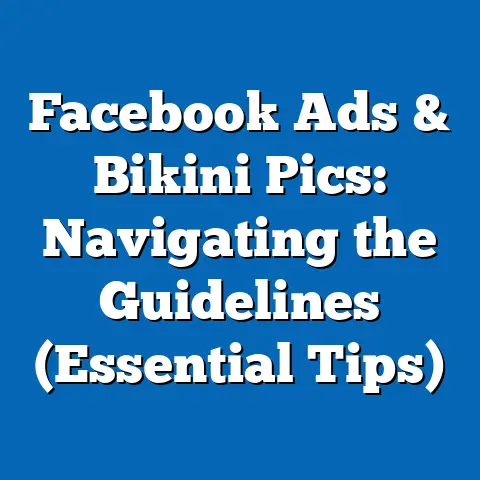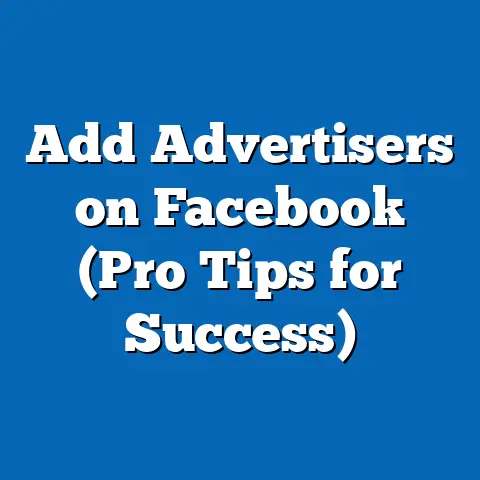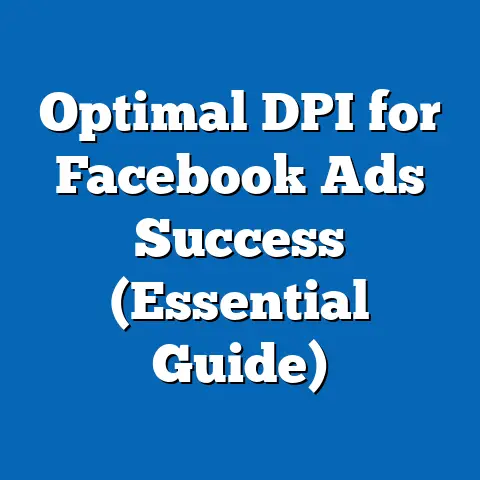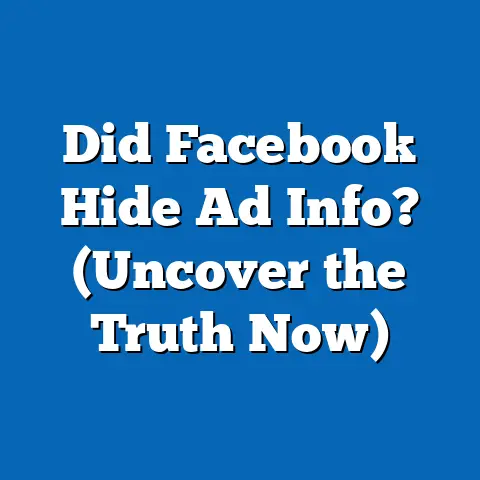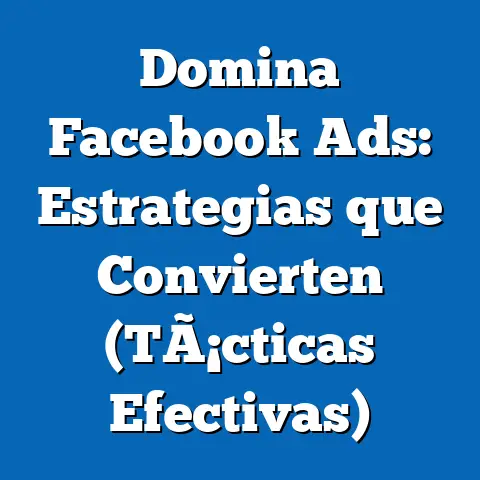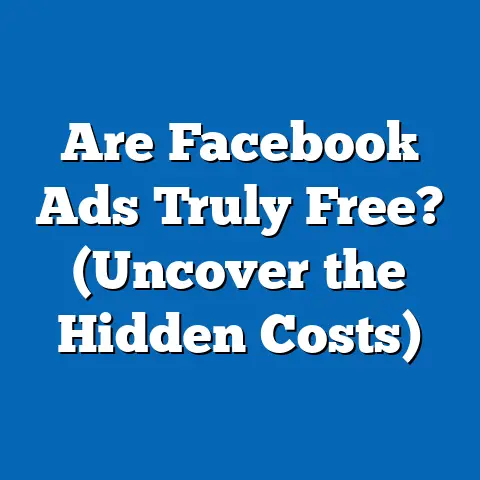Boost CTR Rate on Facebook Ads (Proven Strategies Revealed)
Facebook. It’s more than just a social network; it’s a digital powerhouse where billions connect, share, and, crucially for us marketers, discover new products and services. I’ve spent years navigating the ever-evolving landscape of Facebook advertising, and let me tell you, it’s a wild ride. Unlike other platforms, Facebook offers an unparalleled level of audience granularity and engagement potential. You can target users based on everything from their favorite hobbies to their recent life events, making it a goldmine for personalized marketing. But with great power comes great responsibility, and in this case, that responsibility is maximizing your Click-Through Rate (CTR).
Why CTR, you ask? Because in the competitive world of Facebook ads, a high CTR isn’t just a vanity metric; it’s a lifeline. It’s the key to unlocking lower costs, higher relevance scores, and ultimately, a more successful advertising campaign. I’ve seen firsthand how a well-optimized CTR can transform a struggling campaign into a lead-generating machine. In this guide, I’m going to share my secrets, the proven strategies I’ve used to help businesses of all sizes boost their CTR and achieve their advertising goals. Buckle up, because we’re about to dive deep into the world of Facebook ad optimization.
Understanding CTR and Its Importance
So, what exactly is CTR? Simply put, it’s the percentage of people who see your ad and actually click on it. The formula is straightforward: (Total Clicks / Total Impressions) x 100 = CTR. But don’t let the simplicity fool you. This seemingly small number holds immense power.
Think of it this way: your CTR is a direct reflection of how relevant and engaging your ad is to your target audience. A high CTR tells Facebook that your ad is resonating with users, prompting them to take action. This, in turn, leads to a cascade of positive effects.
- Improved Ad Relevance Score: Facebook rewards relevant ads with higher relevance scores. A higher score means your ad is more likely to be shown to your target audience, and at a lower cost.
- Lower Cost-Per-Click (CPC): When your ad is deemed relevant, Facebook charges you less for each click. This allows you to stretch your budget further and reach more potential customers.
- Increased Return on Ad Spend (ROAS): Ultimately, a higher CTR translates to a better ROAS. You’re getting more clicks for your money, which increases the likelihood of conversions and sales.
I remember working with a client who was struggling to generate leads. Their ads were getting impressions, but no one was clicking. Their CTR was abysmal, hovering around 0.5%. After implementing some of the strategies I’ll share with you, we were able to boost their CTR to over 2%, resulting in a significant increase in leads and a dramatic improvement in their ROAS. It was a game-changer for their business.
Key Takeaway: CTR is a critical KPI for Facebook advertising. A higher CTR leads to improved ad relevance, lower costs, and increased ROAS.
Here are the proven strategies I’ve used to help countless businesses boost their CTR on Facebook.1. Crafting Compelling Ad Copy
Your ad copy is your first (and often only) chance to grab someone’s attention. In a world of endless scrolling, your words need to be powerful, concise, and engaging.
- Be Clear and Concise: Get straight to the point. People have short attention spans, so don’t bury your message in fluff.
- Use Powerful Action Verbs: Words like “Discover,” “Learn,” “Transform,” and “Unlock” are more likely to grab attention and inspire action.
- Address Pain Points: Identify the problems your target audience is facing and show them how your product or service can solve those problems.
- Incorporate Emotional Triggers: Tap into emotions like excitement, fear, or curiosity to create a connection with your audience.
- Ask Questions: Posing a question in your ad copy can pique curiosity and encourage clicks.
I’ve found that testing different ad copy variations is crucial. Try experimenting with different headlines, descriptions, and calls to action to see what resonates best with your audience.
Example:
- Before (Low CTR): “Our company offers the best widgets.”
- After (High CTR): “Tired of frustrating widgets? Discover the widget that will transform your workflow!”
Key Takeaway: Craft compelling ad copy that is clear, concise, and engaging. Use powerful action verbs, address pain points, and incorporate emotional triggers.
2. Utilizing Eye-Catching Visuals
In the visual world of Facebook, your images and videos are just as important as your ad copy. They’re the first thing people see, and they can make or break your ad’s performance.
- Choose High-Quality Images and Videos: Blurry or pixelated visuals are a major turnoff. Invest in professional-quality images or videos that showcase your product or service in the best possible light.
- Align Visuals with Your Brand Message: Your visuals should be consistent with your brand’s overall aesthetic and messaging.
- Evoke Curiosity: Choose visuals that are intriguing and make people want to learn more.
- Use User-Generated Content (UGC): UGC can be incredibly effective because it feels authentic and relatable.
- Experiment with Dynamic Ads: Dynamic ads automatically show the most relevant products to each user, based on their browsing history and interests.
I’ve personally seen that video ads often outperform static images. The moving image can grab attention more easily and convey more information in a short amount of time. However, make sure your video is optimized for mobile viewing and includes captions, as many people watch videos with the sound off.
Example:
3. Targeting the Right Audience
Even the most brilliantly crafted ad will fall flat if it’s shown to the wrong people. Precise audience targeting is essential for maximizing your CTR and achieving your advertising goals.
- Leverage Facebook’s Audience Insights: Use Facebook’s Audience Insights tool to learn more about your target audience, including their demographics, interests, and behaviors.
- Create Custom Audiences: Upload your existing customer data (email addresses, phone numbers) to create custom audiences and target them directly.
- Use Lookalike Audiences: Expand your reach by creating lookalike audiences, which are people who share similar characteristics with your existing customers.
- Target Based on Interests and Behaviors: Target users based on their interests, hobbies, and online behaviors.
- A/B Test Different Audience Segments: Experiment with different audience segments to see which ones are most responsive to your ads.
I remember a campaign where we were initially targeting a broad audience based on general interests. The results were underwhelming. After digging deeper into Facebook’s Audience Insights, we discovered a niche interest group that was highly engaged with our product. By narrowing our targeting to this specific group, we saw a dramatic increase in CTR and a significant improvement in overall campaign performance.
Key Takeaway: Target the right audience by leveraging Facebook’s audience insights, creating custom audiences, and experimenting with different audience segments.
4. Incorporating Strong Call-to-Actions (CTAs)
Your call to action (CTA) is the final nudge that encourages people to click on your ad. It should be clear, concise, and compelling.
- Use Action-Oriented Language: Choose CTAs that tell people exactly what you want them to do, such as “Shop Now,” “Learn More,” “Sign Up,” or “Download.”
- Create Urgency or Exclusivity: CTAs that create a sense of urgency or exclusivity can be highly effective, such as “Limited Time Offer” or “Exclusive Discount.”
- Align Your CTA with Your Campaign Goals: Choose a CTA that aligns with your overall campaign goals. If you’re trying to generate leads, use a CTA like “Get a Free Quote.” If you’re trying to drive sales, use a CTA like “Shop Now.”
- Test Different CTAs: Experiment with different CTAs to see which ones perform best with your audience.
I’ve found that adding a sense of urgency to your CTA can significantly boost your CTR. For example, changing a CTA from “Learn More” to “Learn More Today” can create a sense of urgency and encourage more clicks.
Example:
- Weak CTA: “Click Here”
- Strong CTA: “Shop Now and Get 20% Off!”
Key Takeaway: Incorporate strong calls to action that are clear, concise, and compelling. Create urgency or exclusivity and align your CTA with your campaign goals.
5. Testing and Optimization
The world of Facebook advertising is constantly changing. What works today might not work tomorrow. That’s why continuous testing and optimization are crucial for improving your CTR over time.
- A/B Test Your Ad Copy: Experiment with different headlines, descriptions, and calls to action to see what resonates best with your audience.
- A/B Test Your Visuals: Test different images and videos to see which ones are most eye-catching and engaging.
- A/B Test Your Targeting Options: Experiment with different audience segments to see which ones are most responsive to your ads.
- Analyze Your Results: Use Facebook’s Ads Manager to track your results and identify areas for improvement.
- Make Data-Driven Decisions: Use your data to make informed decisions about how to refine your ad campaigns.
I always recommend setting up multiple ad sets with slight variations in targeting, copy, or visuals. This allows you to quickly identify what’s working and what’s not, and to adjust your campaigns accordingly.
Key Takeaway: Continuously test and optimize your ad campaigns by A/B testing different ad copy, visuals, and targeting options. Analyze your results and make data-driven decisions to refine your campaigns.
6. Leveraging Retargeting Campaigns
Retargeting is the art of showing ads to people who have already interacted with your business in some way, such as visiting your website or engaging with your content. It’s a powerful way to boost your CTR because you’re targeting people who are already familiar with your brand.
- Target Website Visitors: Show ads to people who have visited specific pages on your website.
- Target People Who Have Engaged with Your Content: Show ads to people who have liked, commented on, or shared your Facebook posts.
- Use Dynamic Product Ads: Show ads for specific products that people have viewed on your website.
- Create Custom Audiences Based on Engagement: Create custom audiences based on how people have interacted with your business and target them with tailored ads.
I’ve found that retargeting campaigns can be incredibly effective for driving conversions. By showing ads to people who have already expressed an interest in your products or services, you’re increasing the likelihood that they’ll take action.
Example:
- Someone visits your website and views a specific product.
- You show them a dynamic product ad on Facebook featuring that same product, along with a special discount.
Key Takeaway: Leverage retargeting campaigns to target people who have already interacted with your business. Use dynamic product ads and create custom audiences based on engagement.
Case Studies and Real-World Examples
Let’s take a look at a few real-world examples of businesses that have successfully boosted their CTR on Facebook:
- E-commerce Brand: An e-commerce brand selling clothing saw a 30% increase in CTR after implementing a retargeting campaign that showed dynamic product ads to website visitors.
- Local Restaurant: A local restaurant saw a 20% increase in CTR after A/B testing different ad copy variations and identifying the ones that resonated best with their target audience.
- Software Company: A software company saw a 15% increase in CTR after narrowing their targeting to a niche interest group that was highly engaged with their product.
These are just a few examples, but they illustrate the power of implementing the strategies I’ve outlined in this guide.
Conclusion
Boosting your CTR on Facebook ads is not a magic trick; it’s a science. It requires a deep understanding of your audience, a commitment to testing and optimization, and a willingness to adapt to the ever-changing landscape of Facebook advertising.
By crafting compelling ad copy, utilizing eye-catching visuals, targeting the right audience, incorporating strong calls to action, testing and optimization, and leveraging retargeting campaigns, you can unlock significant potential within the Facebook advertising landscape.
Remember, it’s not about creating the “perfect” ad; it’s about creating ads that resonate with your target audience and encourage them to take action.
Now, I want to hear from you. What strategies have you used to boost your CTR on Facebook? Share your experiences in the comments below. And if you found this guide helpful, be sure to follow me for more insights on Facebook advertising.

